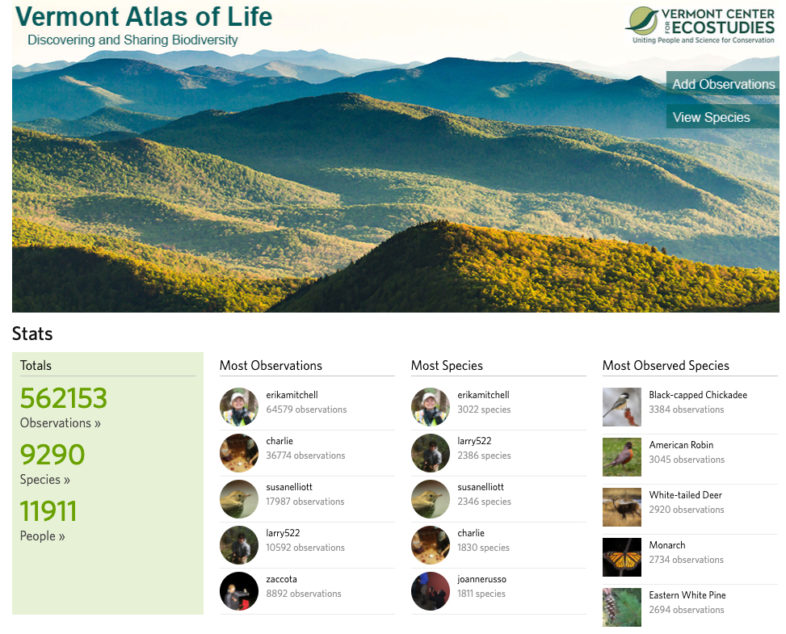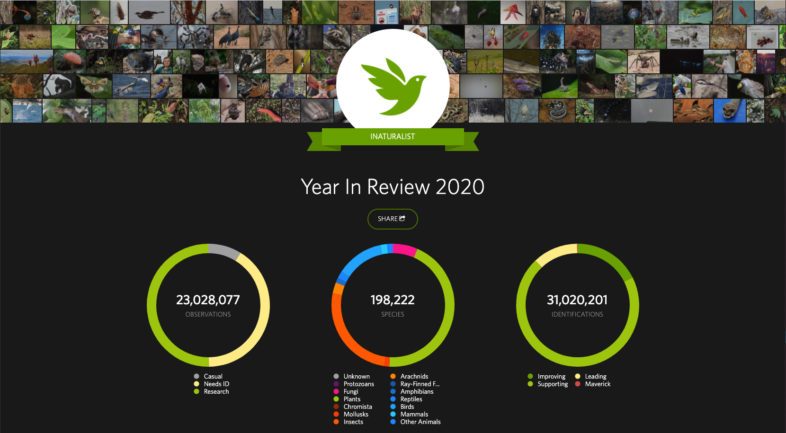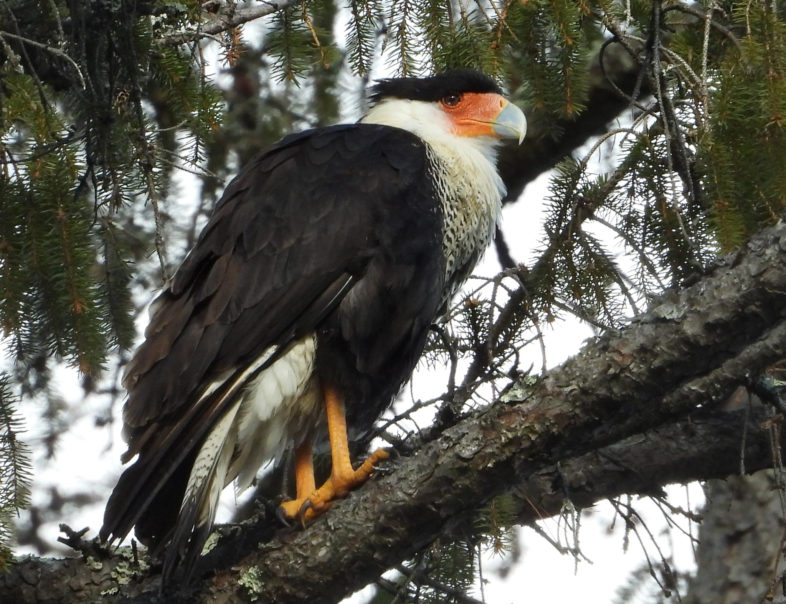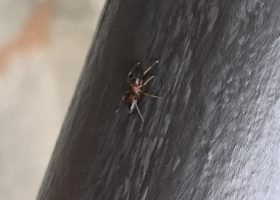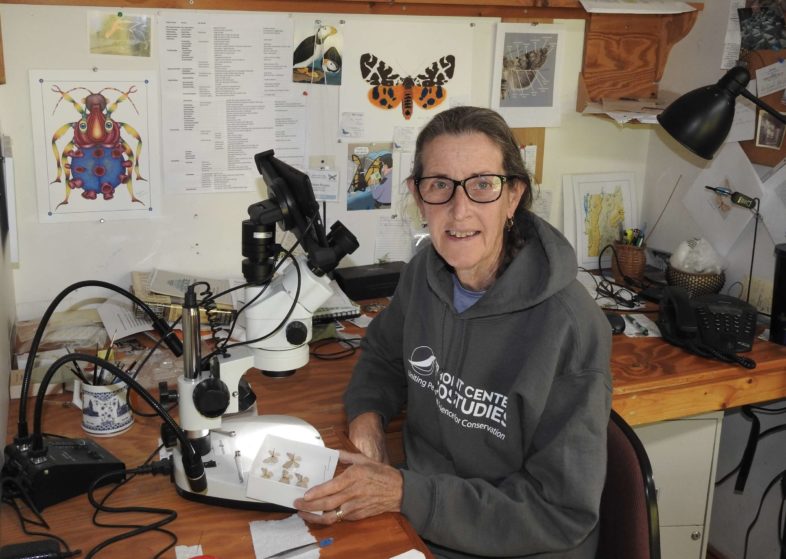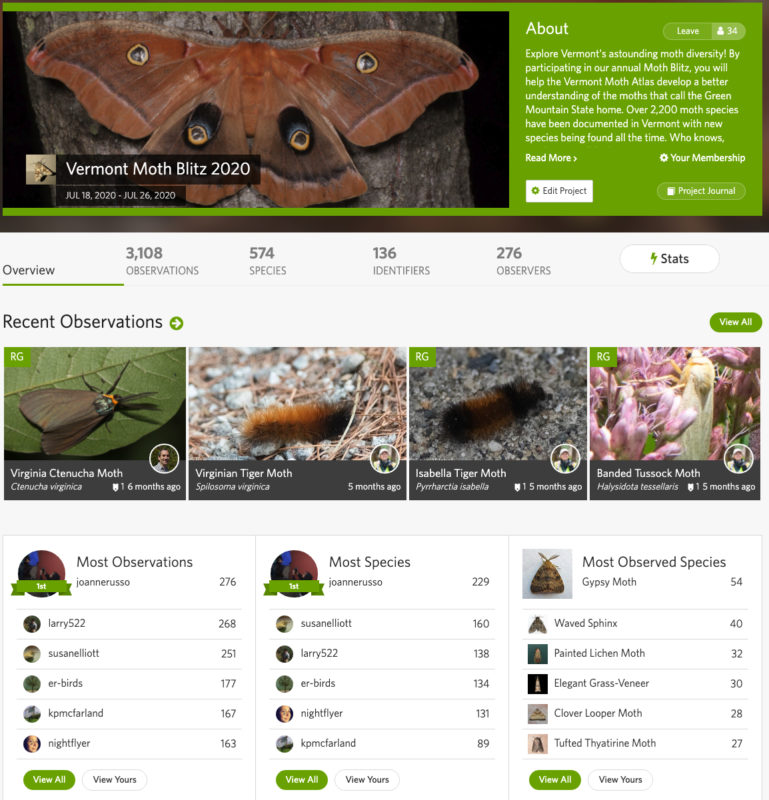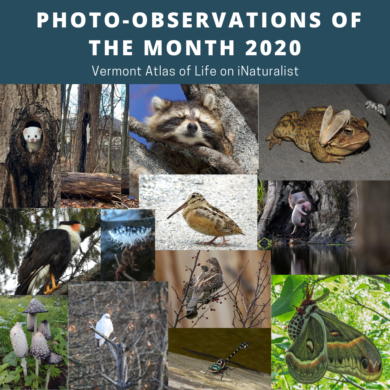From the first observation of 2020, a Gray Fox still celebrating the New Year at 4:30 AM submitted by ckhunt, to Great Mullein leaves poking out of the snow shared by Pete Kerby-Miller at twilight on the last day of the year, naturalists added nearly 175,000 biodiversity records to our rapidly growing database of life in Vermont.
And, amazing observations kept coming all year long. We had 6,092 naturalists contribute more than 174,597 observations representing 4,073 species verified. Over 3,900 naturalist and experts helped to identify and verify data.
These statistics are 2-3 times higher than any previous year. We’ve worked hard to recruit new users to the project, from seasoned naturalists to those just learning, and many of you have helped. But surely our work alone can’t explain this incredible growth in one year that had so many challenges for all of us. We think we know the answer.
Researchers from the University of Vermont collected data from online surveys taken by over 3,200 Vermonters between May 3 and May 19, 2020—a time when Governor Phil Scott had placed restrictions on businesses and social gatherings to lessen the impact of COVID-19 that continue to this day. The respondents reported increased participation in outdoor activities. Walking was up 70%, relaxing outside alone was up 58%, photography was up 54%, and most importantly, wildlife watching rose 64%. It’s clear that nature nurtures us in times of trouble.
We were not alone. Vermonters joined nearly a million iNaturalists worldwide that submitted over 25 million observations in 2020!
Check out the 2020 year in review statistics dashboard, and if you’re an iNaturalist you can see your year in review too. Share it proudly on social media and tag it with #vtatlasoflife so we can see your discoveries too!
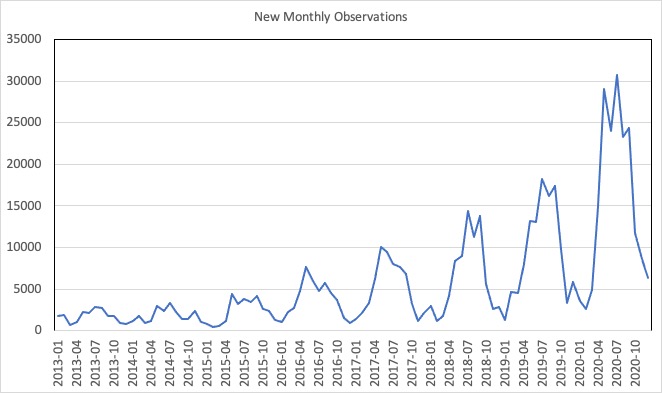
The Vermont Atlas of Life on iNaturalist has grown leaps and bounds since 2013. We now have over 560,000 biodiversity observations in the database. Note the peaks and valleys of data sharing match the seasons each year.
Research Grade Observations
An observation submitted to iNaturalist becomes what is called ‘research grade’ when it has: a date, latitude and longitude coordinates, photos or sounds, and the community agrees on the identification to species level. We have over 355,000 research grade observations comprising over 6,270 species in the Vermont Atlas of Life iNaturalist database. These data are shared continually with the Global Biodiversity Information Facility, an international open data infrastructure that allows anyone, anywhere to access data about all types of life on Earth, shared across national boundaries via the Internet.
It takes a village for an observation to become research grade. Other naturalists that can identify species from the submitted images or sound recordings help make these observations into research grade data. We had nearly 4,000 iNaturalists help identify observations in 2020 alone. The top 10 iNaturalists in 2020 verified nearly 50% of all the verifiable records in 2020. Thank you to everyone that helped identify observations!
| Rank | User | Identifications |
|---|---|---|
| 1 | tsn | 9,715 |
| 2 | amandammvt | 9,130 |
| 3 | nsharp | 6,655 |
| 4 | cgbb2004 | 6,528 |
| 5 | joannerusso | 5,251 |
| 6 | trscavo | 5,019 |
| 7 | beeboy | 3,624 |
| 8 | awaring | 2,586 |
| 9 | hobiecat | 2,494 |
| 10 | johnascher | 2,009 |
Some New and Amazing Discoveries in 2020
This year naturalists added 556 new species to the database, many of these likely completely new discoveries for Vermont. Here are just a few highlights that caught our attention.
A Bird Named Elvis
It all began with a Bald Eagle named Elvis. On March 23, 2018 Mark Bessette surprised the Vermont iNaturalist community. Mark had snapped some photographs of an unusual-looking bird that he dubbed, “Elvis, the juvenile bald eagle.” The bird appeared to have a black wig that reminded Mark of the “King of Rock and Roll,” Elvis Presley. The iNaturalist community was quick to weigh in on the real identity of this bird. To seasoned birders, it easily stood out as a misplaced Crested Caracara, a scavenging relative of falcons native to Florida, the desert southwest, Mexico, and southward. It appears that this southern visitor constitutes a historic first record of this species in Vermont! Following hot on its heels, or talons in this case, was Vermont’s second record of Crested Caracara that delighted birders in Woodstock in the spring of 2020. Read the whole wild story about these birds on the VCE Blog.
New Ant-Mimic Spider Sneaks Into Vermont
A small, metallic-black arthropod with a head, thorax, abdomen, and two waving antennae–your classic picnic-robbing ant right? Take a closer look at Michael Sundue’s photos at the Vermont Atlas of Life on iNaturalist and you’ll see that in fact this little critter only has two distinct body segments, and those waving antennae up front are actually a pair of legs! Michael Sundue, a botanist at the University of Vermont’s Pringle Herbarium, not only knew to take photos of this interesting arachnid to upload to the Vermont Atlas of Life on iNaturalist, but even correctly identified this ant-mimicking spider to species in his iNaturalist post. This species identification was then verified by one of the leading experts of ant-mimic spider identification on iNaturalist, user Jeremy Hussell, making this the first verified observation of Myrmarachne formicaria in Vermont. Read more on the VAL Blog.
iNaturalists Help Find New Species for the Vermont Wild Bee Survey
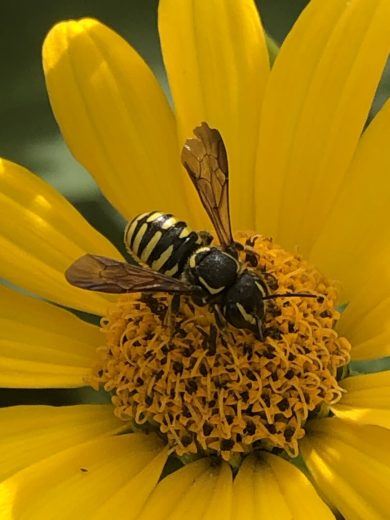
Sunflower Burrowing-Resin Bee (Paranthidium jugatorium) first discovered in Vermont by Kevin Hemeon.
With a concerted effort to recruit people to survey their backyards and neighborhoods for the Wild Bee Survey during COVID-19 restrictions, we had 530 volunteers photograph and share 5,007 bee observations on the Vermont Atlas of Life on iNaturalist project in 2020, doubling 2019 numbers. This represented 85 confirmed species (many confirmations were done by world expert Dr. John Ascher and VCE’s Spencer Hardy), one of which was a new species for Vermont. The Sunflower Burrowing-Resin Bee (Paranthidium jugatorium) was discovered and photographed by Kevin Hemeon in southern Vermont and verified by John Ascher. This is a significant extension of its range northward in northeastern North America.
A Dozen New Moths Recorded for First Time in Vermont by iNaturalists
It is hard to talk about moths and iNaturalist without JoAnne Russo immediately coming to mind. One of the region’s foremost (and self-trained) moth experts, JoAnne has helped keep the taxonomy of the Vermont Moth Atlas up to date, never failing to alert us when a new moth for the state is reported and confirmed. And beyond her amazing work with moths, JoAnne has an impressive list of community science contributions over the past 30+ years. Her life in nature and science this past year was recognized with VCE’s 2020 Julie Nicholson Community Science Award.
During this past year JoAnne documented eight new species of moths for Vermont, all of them near her house.
- Spotted Dart (Agrotis stigmosa)
- Peppered Haimbachia Moth (Haimbachia placidella)
- Scalloped Sack-bearer Moth (Lacosoma chiridota)
- Bordered Sallow (Pyrrhia cilisca) Larva confirmed by Dave Wagner
- Tulip Tree Leaf Miner (Phyllocnistis liriodendronella)
- Grateful Midget (Elaphria grata)
- Black-bordered Lemon Moth (Marimatha nigrofimbria) during the Vermont 2020 Moth Blitz week
- Plain Plume Moth (Hellinsia homodactylus) confirmed by Deborah Matthews, plume moth expert from microscopic dissection images prepared by JoAnne.
JoAnne wasn’t alone. Jennifer Murdoch reported two new species from her neighborhood: a tiny leafroller moth with just a scientific name (Cenopis ferreana) and the more robust Obscure Underwing (Catocala obscura). During the annual National Moth Week when we sponsor our week long Vermont Moth Blitz each year, iNaturalist gumer reported a Black-tailed Diver Moth (Bellura vulnifica) which was confirmed by expert Chris Schmidt.
A moth I have seen in more tropical climates several times finally made an appearance in Vermont. The Black Witch (Ascalapha odorata) is well known for its forays northward with storms and strong southern winds. Jenny Russ (aka jrussvt) spotted this amazing moth on her woodshed and lucky for us, she snapped a photo and posted it on iNaturalist.
“I’m excited to learn my moth sighting is a first record for Vermont! It was in the 80s, around 5:30pm on July 4th, when I first observed the moth,” wrote Jenny. “I checked several times in the evening and the moth remained in the same location. The next morning it was gone. I haven’t seen it since.”
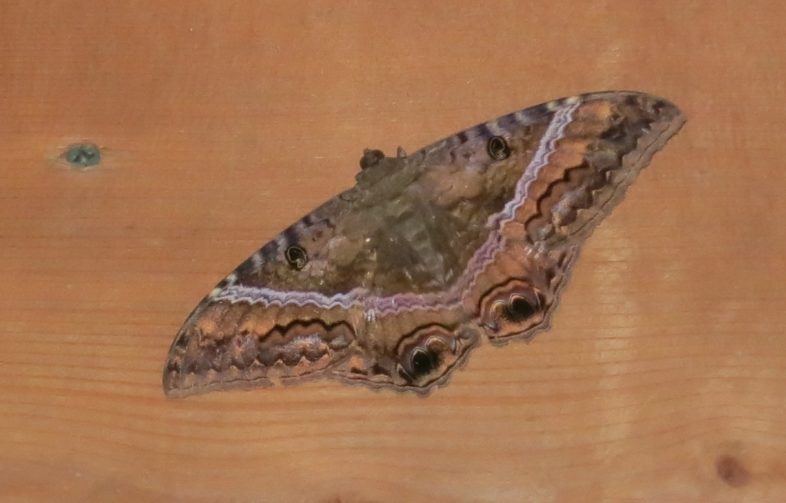
Ranging from the southern United States to Argentina, the Black Witch moth travels widely on a wingspan of up to 6.5 inches! In the folklore of many Central American cultures, it is associated with death or misfortune.
We hope many of you can join us next year in recording and discovering the amazing moth life in Vermont and right in your backyard!
Plants Rule!
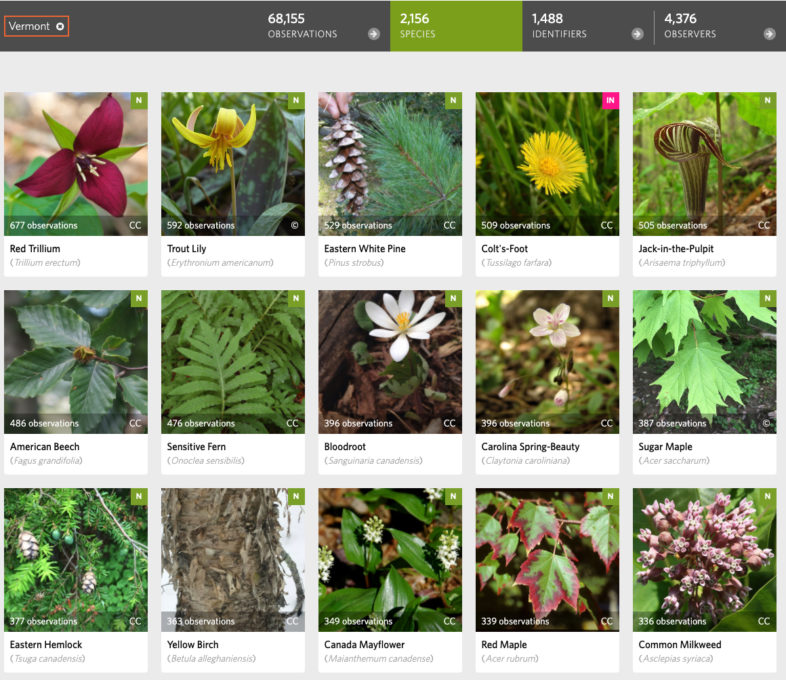
Plants clearly comprise the bulk of observations on the Vermont Atlas of Life at iNaturalist and 2020 was no exception. We had 4,158 iNaturalists contribute 66,328 verifiable observations comprising 1,148 verified species of plants in 2020. This was nearly three times more than in 2019! There were 211 introduced species reported and over 100 species of some conservation concern.
Charlie Hohn contributed the most with 4,342 verifiable observations, and he also had the most species with 615. Helping to verify records is another important part of the data. amandammvt identified 7,608 plant records, followed closely by Tom Norton. Remarkable work!
Top 5 Vermont Plant Reporters on iNaturalist in 2020
| Rank | User | Observations | Species |
|---|---|---|---|
| 1 | charlie | 4,342 | 615 |
| 2 | erikamitchell | 2,398 | 461 |
| 3 | trscavo | 2,223 | 213 |
| 4 | elliotgreiner | 1,108 | 219 |
| 5 | er-birds | 1,035 | 496 |
Top 5 Vermont Plant Identifiers on iNaturalist in 2020
| Rank | User | Identifications |
|---|---|---|
| 1 | amandammvt | 7,608 |
| 2 | tsn | 7,353 |
| 3 | cgbb2004 | 4,748 |
| 4 | trscavo | 3,549 |
| 5 | nsharp | 1,671 |
Explore the 2020 Photo-Observation of the Month Winners
Each month, iNaturalists ‘fav’ any observation they like as a vote for the VAL iNaturalist photo-observation of the month. Check out these awesome winners from 2020 and learn a little bit about the natural history of each organism.
We hope you’ll join the project and help us make this biodiversity database grow. Make the Vermont Atlas of Life at iNaturalist your New Year’s resolution in 2021!
